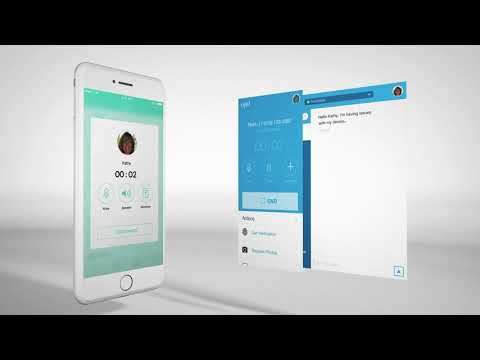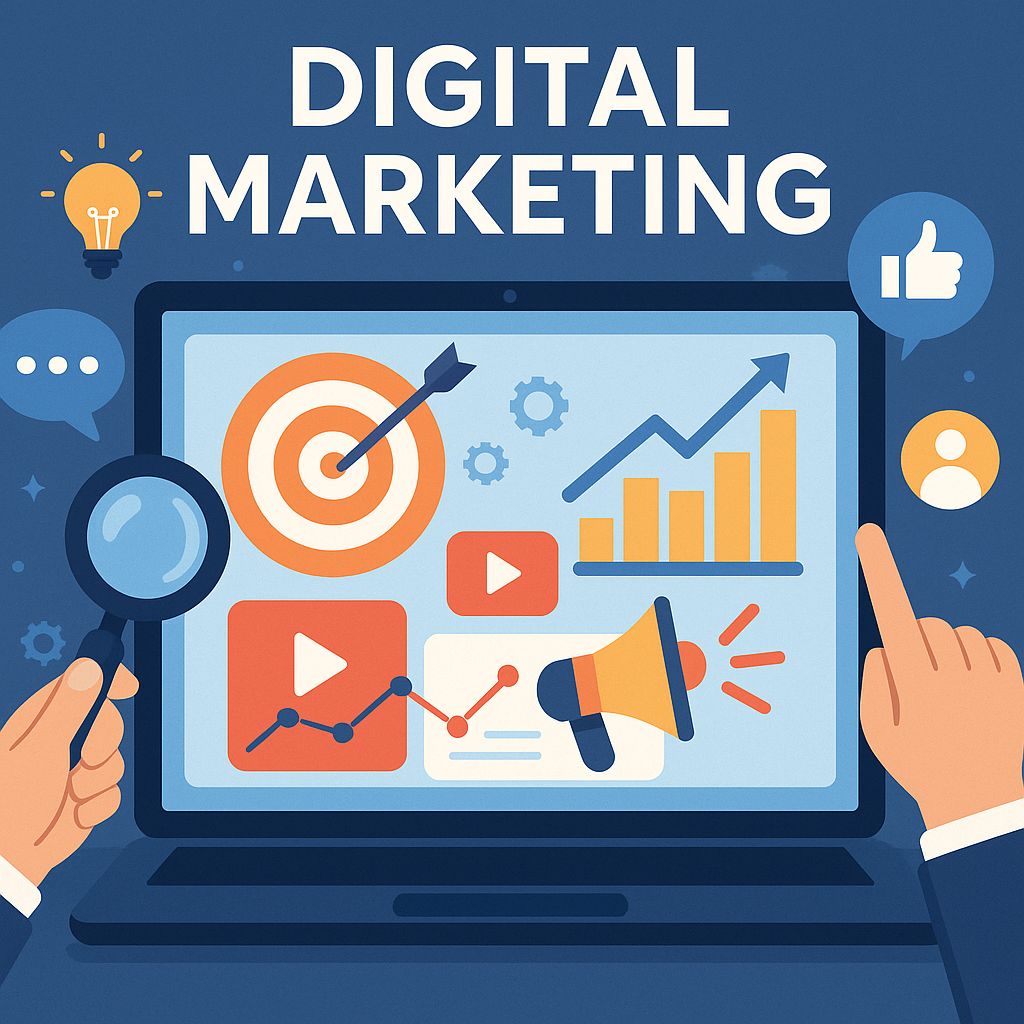Key Takeaways
- Custom app demo videos can increase conversion rates by up to 80% when they focus on solving specific user problems rather than just showcasing features
- The first 8 seconds of your app demo video are crucial – viewers decide whether to continue watching or bounce within this timeframe
- Problem-solution demos (60-90 seconds) typically convert better than longer feature showcases for most B2B and SaaS applications
- Visual cues like highlights, arrows, and zoom effects dramatically improve viewer comprehension and retention of key features
- DemoCreator by Wondershare offers an all-in-one solution for creating professional app demos without requiring video production expertise
Want to know why some apps convert at 20% while others struggle to hit 2%? The difference often comes down to how effectively they demonstrate their value. Custom app demo videos have emerged as the single most powerful tool in a digital marketer’s arsenal for showing—not telling—potential customers exactly how a product solves their problems.
When done right, app demos create an “aha moment” that bridges the gap between feature descriptions and real-world benefits. According to recent conversion data, websites using targeted demo videos see up to 86% longer visit durations and 34% higher conversion rates compared to those relying solely on text and images. DemoCreator’s analytics dashboard reveals that prospects who watch a well-crafted demo video are 4X more likely to request a sales call or start a free trial.
How Custom App Demo Videos Skyrocket Conversion Rates
The human brain processes visual information 60,000 times faster than text. This biological fact explains why custom app demo videos convert so effectively—they create immediate understanding where feature lists fail. When potential customers can visualize themselves using your solution, the psychological distance between consideration and purchase dramatically shrinks.
What makes certain demo videos outperform others? The data shows three critical factors: problem-centric framing (starting with the user’s pain point rather than your features), visual clarity (using highlights and animations to draw attention to key interactions), and emotional resonance (showing the relief or achievement that comes from using your app). Videos incorporating all three elements convert at nearly double the rate of those focusing solely on functionality.
Conversion rates also improve when demo videos are strategically placed throughout the customer journey—not just on landing pages. Top-performing companies embed targeted micro-demos in email campaigns (increasing click-through rates by 65%), customer onboarding sequences (reducing churn by 38%), and even retargeting ads (improving conversion by 27% compared to static images).

The 4 Types of App Demo Videos That Actually Sell
Not all demo videos serve the same purpose or deliver equal results. Understanding the strengths of each format allows you to deploy the right video at the right stage of your sales funnel. Let’s explore the four types that consistently drive the highest conversion rates across industries. For more insights, check out our article on custom app demo videos.
1. Feature Showcase Videos (2-3 Minutes)
Feature showcase videos provide a comprehensive overview of your app’s capabilities, ideal for prospects who are already familiar with your value proposition but need to verify your solution meets their specific requirements. These slightly longer videos typically perform best when embedded on product pages or sent to mid-funnel prospects who have expressed interest but need additional validation before purchasing. Discover why a custom app demo video is the key to SaaS growth and how it can enhance your feature showcase strategy.
The key to effective feature showcases lies in organizing capabilities by user benefit rather than technical implementation. For example, instead of demonstrating “our proprietary machine learning algorithm,” show “how the app automatically identifies expense report errors in seconds.” This benefit-first approach maintains viewer engagement through what would otherwise become a tedious feature list.
A standout example comes from Notion, whose feature showcase achieves an impressive 72% completion rate by grouping capabilities into user-centric workflows rather than isolated features. The video maintains a consistent narrative thread of “here’s how this solves your specific problem” rather than “here’s another cool thing our app does.”
2. Problem-Solution Demos (60-90 Seconds)
The problem-solution format delivers the highest conversion rate of all demo types, particularly for top-of-funnel prospects who may not yet recognize they need your solution. These concise videos begin by vividly illustrating a specific pain point before transitioning to a clean, efficient solution demonstration.
What makes these demos so effective is their narrative structure: they create tension by highlighting a frustration, then provide immediate relief through your app’s solution. This emotional journey—from pain to resolution—creates a powerful dopamine response that significantly increases conversion intent. The brevity of these videos also respects the viewer’s time, typically resulting in 85%+ completion rates.
3. User Journey Walkthroughs (3-5 Minutes)
User journey walkthroughs follow a complete end-to-end process that prospects typically perform in their role. These longer-format videos excel in complex B2B environments where purchase decisions involve multiple stakeholders and lengthy consideration periods. By demonstrating how your app streamlines an entire workflow—not just individual tasks—you validate your solution’s real-world applicability.
Conversion data shows these comprehensive demos are particularly effective for high-ticket solutions with annual contracts exceeding $10,000. When decision-makers can visualize the complete transformation your app enables, perceived implementation risk decreases dramatically. For maximum impact, structure these walkthroughs as “day in the life” scenarios that mirror your target user’s actual responsibilities. Consider exploring explainer videos that sell your software to enhance these presentations.
Sophisticated user journey demos incorporate “before and after” sequences that quantify time savings or error reduction. For example, showing a 45-minute manual process condensed to 3 minutes with your solution creates compelling ROI visualization that procurement teams find irresistible.
4. Results-Focused Testimonial Demos (1-2 Minutes)
Results-focused testimonial demos blend customer success stories with actual screen recordings of the app in action. This hybrid format delivers exceptional conversion power by combining social proof with tangible feature demonstration. The authenticity of seeing real customers using your app to solve real problems creates powerful trust signals that overcome buyer hesitation.
The optimal structure follows a problem-solution-results narrative where the customer briefly explains their challenge, demonstrates the specific app features they used to address it, then quantifies the outcomes achieved. Including specific metrics—like “We increased conversion by 28% within 60 days”—transforms abstract benefits into concrete business results that justify investment. For more insights on creating effective app demos, check out Spire Video’s proven formula for high-converting explainer videos.

Why Most App Demo Videos Fail to Convert (And How to Fix Yours)
Despite their potential, many app demo videos underperform because they commit fundamental errors that repel rather than attract viewers. Understanding these pitfalls is essential for creating demos that actually drive conversions.
The Fatal Mistake of Information Overload
The single biggest conversion killer in app demos is attempting to show too much. Eye-tracking studies reveal that viewers stop processing new information after approximately 4-5 key points, yet the average demo attempts to showcase 12+ features. This cognitive overload triggers decision paralysis rather than purchase confidence. To understand why focusing on fewer features is crucial, explore the key to SaaS growth.
The solution is ruthless prioritization: identify the 3-4 core features that directly address your target audience’s primary pain points and focus exclusively on those. For enterprise apps with complex functionality, create multiple targeted demos for different user personas rather than a single overwhelming overview. Consider utilizing affordable SaaS explainer videos to effectively communicate these features.
Missing the Critical First 8 Seconds
Video retention analytics consistently show that 20% of viewers abandon videos within the first 8 seconds. Yet many demos waste this crucial window on lengthy logos, generic introductions, or technical setup. This squanders the brief opportunity to hook viewers before they click away.
High-converting demos immediately open with either a compelling problem statement (“Tired of spending hours reconciling expense reports?”) or an attention-grabbing result (“See how Company X processed 2,000 invoices in just 15 minutes”). This pattern interruption buys you the attention needed to deliver your core message.
Poor Visual Hierarchy That Confuses Viewers
Ineffective demos often fail to guide the viewer’s eye to the elements that matter most. When screens contain dozens of UI elements but nothing directs attention to the relevant controls, cognitive friction increases and comprehension plummets. This visual confusion translates directly to reduced conversion rates.
The fix is implementing clear visual hierarchy through techniques like spotlight effects (dimming everything except the relevant UI element), animated cursors that predict where viewers should look, and zoom animations that magnify important details. These visual cues reduce cognitive load by eliminating the need for viewers to search for relevant information.

7 Must-Have Elements in High-Converting App Demo Videos
After analyzing thousands of app demos across conversion rates and industries, clear patterns emerge in the highest-performing videos. Incorporating these seven elements will dramatically improve your demo’s ability to convert viewers into customers. For more insights, check out how affordable SaaS explainer videos can enhance your conversion strategy.
1. Clear Value Proposition Within 10 Seconds
Begin with a concise statement that answers the viewer’s primary question: “What’s in it for me?” This value proposition should emphasize outcomes rather than features, focusing on how your app alleviates specific pain points or creates tangible benefits. For example, “Slash your reporting time by 78% while eliminating data entry errors” communicates value much more effectively than “Our automated reporting tool with AI capabilities.”
2. Real Problem Scenarios Your Customers Face
Show realistic situations that trigger frustration for your target users—moments where their current solution fails them. This problem framing creates emotional resonance and establishes relevance before you introduce your solution. When viewers recognize their own challenges, they instantly become more receptive to your proposed solution.
Social Media Distribution Strategy
Social platforms offer unique opportunities for app demo video distribution beyond your owned channels. LinkedIn has proven particularly effective for B2B app demos, with native video posts generating 3x the engagement of shared YouTube links. The key to social success lies in platform-specific optimization—vertical orientation for Instagram Stories, captions for sound-off viewing on Facebook, and under 60 seconds for Twitter/X to maximize retention. For more insights, explore how custom videos drive SaaS startups toward success.
Strategic hashtag research dramatically improves organic reach for demo videos. Rather than broad terms like #appdemo, target industry-specific hashtags where potential customers are actively searching for solutions. For example, a project management app might use #agileprojectmanagement or #scrumteamtools to reach qualified audiences already experiencing the problems your app solves.
Retargeting Ads With Demo Snippets
Retargeting campaigns featuring 15-30 second snippets from your full demo video deliver exceptional ROI, with conversion rates typically 2-4x higher than static image ads. The most effective approach uses multiple snippet variations highlighting different features based on the prospect’s previous site behavior. For instance, visitors who viewed pricing pages might see ROI-focused snippets, while those who browsed feature pages might see technical capability demonstrations.
Measure What Matters: Demo Video Analytics That Predict Sales
The true value of app demo videos emerges when you track metrics that correlate with actual conversions, not just vanity metrics like view counts. Implementing proper video analytics allows you to continuously optimize based on viewer behavior patterns, identifying exactly which demonstrations trigger purchase decisions and which cause viewers to lose interest.
Key Metrics Beyond View Count
Completion rate remains the strongest predictor of conversion intent, with prospects who watch at least 80% of your demo being 3x more likely to convert than those who abandon early. Segment this data by traffic source to identify which channels deliver the most engaged viewers—email referrals typically show higher completion rates than social media traffic.
Engagement actions like pausing, rewinding, or replaying specific sections reveal which features resonate most with prospects. Heat mapping these interactions across your user interface helps prioritize which elements to emphasize in future demos and product development. When viewers repeatedly rewatch a particular feature demonstration, you’ve identified a potential competitive advantage worth highlighting throughout your marketing.
Drop-Off Points and What They Reveal
Viewer abandonment spikes provide invaluable diagnostic information about your demo’s weaknesses. Common drop-off patterns include the 8-second threshold (indicating a weak opening), feature transition points (signaling poor narrative flow), and technical explanation sections (suggesting overly complex presentation). Each abandonment spike represents an opportunity to restructure your demo for improved retention and ultimately higher conversion rates.
A/B Testing Your Demo Videos
Systematic A/B testing of demo videos consistently yields conversion improvements of 15-30% with relatively minor adjustments. The highest-impact variables worth testing include opening sequences (problem-first vs. solution-first), narration style (conversational vs. technical), demonstration pace (comprehensive vs. focused), and call-to-action placement (mid-video vs. conclusion only). For maximum statistical validity, isolate a single variable in each test while maintaining consistent distribution channels and target audiences.
Turn Your App Demo Videos Into Your Best Salespeople
The most successful companies treat app demo videos as core sales assets rather than marketing collateral. When strategically created and deployed, these videos work continuously to educate prospects, overcome objections, and drive conversions 24/7 without requiring direct sales involvement. The result is compressed sales cycles, reduced customer acquisition costs, and scalable growth.
The ultimate measure of demo video effectiveness isn’t views, shares, or even completion rates—it’s closed deals. By implementing the strategies outlined here, you’ll transform passive viewers into active customers at rates that meaningfully impact your bottom line. Remember that demo videos aren’t just product explanations; they’re visual sales pitches designed to create emotional connections between your solution and your prospect’s needs.

Frequently Asked Questions
Q: How long should my app demo video be to maximize conversions?
Completion rate data shows a sharp drop-off after 4 minutes regardless of audience awareness level, making this an absolute ceiling for even complex enterprise applications. If your solution requires more extensive demonstration, create a series of focused videos rather than a single lengthy overview.
The one exception to length limitations is product-led growth companies offering immediate free trials, where extended 5-8 minute tutorials can actually increase conversion by reducing onboarding friction. However, these should be clearly labeled as in-depth tutorials rather than initial demos.
Demo Length Benchmarks by Funnel Position
Top of Funnel: 30-60 seconds (problem-solution format)
Middle of Funnel: 1-2 minutes (feature highlights)
Bottom of Funnel: 2-3 minutes (comprehensive solution)
Post-Purchase: 3-5 minutes (detailed onboarding)
Industry benchmarks also matter—B2C app demos typically perform best at 30-90 seconds, while B2B SaaS demos can sustain engagement for 2-3 minutes when demonstrating complex workflows that deliver significant time or cost savings.
Q: What’s better for app demos – professional voiceover or real team members?
That said, your team member must be reasonably articulate and energetic. If your internal narrator sounds monotone or uncertain, a professional voiceover becomes the better choice. A hybrid approach that works exceptionally well is having a team member script and record the narration, then having it professionally cleaned and enhanced rather than completely replaced.
Q: How much does a custom app demo video typically cost to produce?
Full-service agency production typically costs $3,000-10,000 per video, but rarely delivers proportional conversion improvements to justify this investment for early-stage companies. The sweet spot for most companies is the mid-tier approach, using specialized software but keeping production in-house to maintain authentic product expertise while achieving professional visual quality. For those interested in how affordable custom videos can drive SaaS startups toward success, check out this resource.
Q: Should I create different demo videos for different buyer personas?
Q: How often should I update my app demo videos after new features launch?
A sustainable approach is maintaining a modular demo structure where feature-specific segments can be updated independently without recreating the entire video. This allows for efficient updates while maintaining consistent opening and closing sequences that reinforce brand identity.
Remember that outdated demos don’t just miss showing new capabilities—they actively harm conversion by suggesting your product is stagnant or that your marketing is neglected. In fast-moving categories like productivity or analytics tools, demo videos older than 6 months can actually reduce conversion rates compared to having no demo at all.





